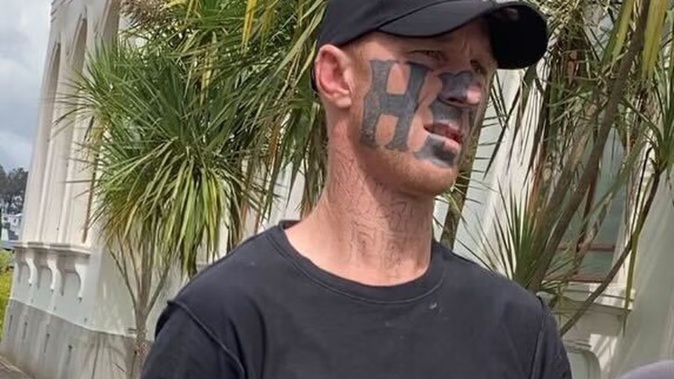

A Filthy Few gang member with an “intense drive for violence” and who has tried to wreak vengeance on those who have testified against him has been back in court, but this time as Corrections try to get an order to ensure no one else is hurt.
David Aaron Stephenson has been out of prison for five months after serving all of his six-year and five-month term for a slew of charges including kidnapping, indecent assault, firearms and methamphetamine offences after trying to take vengeance on people who had testified against him at a trial.
The 37-year-old put a gun to a woman’s head in a car and then fired it into the windscreen, after she wouldn’t tell him where those testified against him in relation to earlier offending lived. He continued his torment and threats, along with an indecent assault, for several hours before agreeing to let her go.
Although he’s now out of jail, the Department of Corrections, through counsel Amy Alcock, on Friday sought an extended supervision order (ESO) in the High Court at Hamilton on several grounds, including that should Stephenson become “destabilised” in the future, he would be at a “very high risk” of further violent offending.
An ESO is used to both monitor and manage the long-term risk posed by a “very high-risk violent offender” who is back in the community.
Alcock said the department was seeking a five-year ESO for Stephenson, who has “HEIL” tattooed across his face.
However, his counsel, David Allan, told Justice Kiri Tahana the application “must fail” as Stephenson’s behaviours didn’t reach the threshold for an ESO to be imposed.
Alcock said Stephenson had medical issues that affected his emotional regulation and verbal aggression.
He’d also previously suffered serious head injuries which had gone untreated.
A specialist’s report stated the impact of those head injuries, along with other diagnoses including post traumatic stress disorder (PTSD), on his behaviour was still unknown.
“But these are factors which could contribute to him becoming destabilised and becoming a very high risk,” he said.
She said while he’d undergone treatment while in prison, there was still a “predictable set of circumstances where this could become reactivated”. They included getting back with his fellow gang members or doing drugs.
Comments that he used meth to “suppress unwanted emotions” was of concern, she said, as it would likely lead to further violent offending.
The convictions he was last in jail for involved Stephenson seeking retribution after five months out of jail.
Alcock said he “ruminates” over his “injustices”, adding that he had 10 violence-related convictions in his criminal history.
‘The order must fail’
Arguing against the order, Allan said the most important point was in Justice Sarah Katz’s sentencing notes from 2018, where she pointed out Stephenson said he was open to counselling for drug addiction and she encouraged him to pursue it.
Allan said while behind bars Stephenson had completed a nine-month violence offending course, a drug treatment course, 13 one-on-one psychologist sessions, along with four years’ worth of other counselling.
“It’s relevant to his risk. He’s now five months post-release and there’s no evidence of a deterioration in mood or destabilisation.”
A person also needed to have “extreme aggravated volatility” to qualify for the order. The specialist’s report only indicated aggravated volatility.
“That really can only qualify if it includes the word ‘extreme’. This is quite a narrow gate the person has to have such a prohibitive order imposed.”
The specialist report noted that while Stephenson had “potentially evidenced aggressive volatility in certain circumstances ... it has not been consistent across all contexts and situations”.
“So on that behavioral characteristic alone, the application must fail because all five [factors] are mandatory.”
Stephenson was also generous with his time with the psychologist - spending 15 hours with them, more than the usual four to six hours.
“Fifteen hours suggests quite a high degree of engagement, Allan said.
“It goes to the nature of these very specific behavourial characteristics, for a person harbouring vengeful intentions over time ... that is not something that is drug-induced, that’s where a person in their day-to-day life is harbouring vengeful intentions.”
He said there was no evidence Stephenson harboured vengeful intentions against his victims or anyone else.
“Rumination over previous injustices is not part of it,” he said.
Justice Tahana reserved her decision.
Belinda Feek is an Open Justice reporter based in Waikato. She has worked at NZME for nine years and been a journalist for 20.

Take your Radio, Podcasts and Music with you









